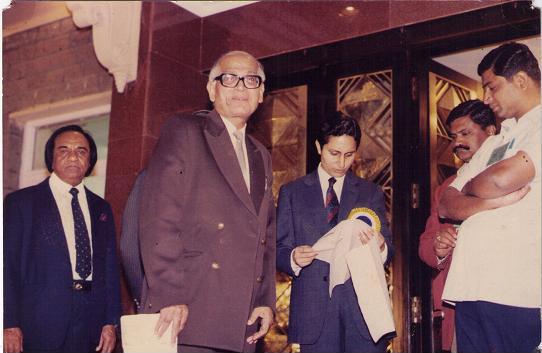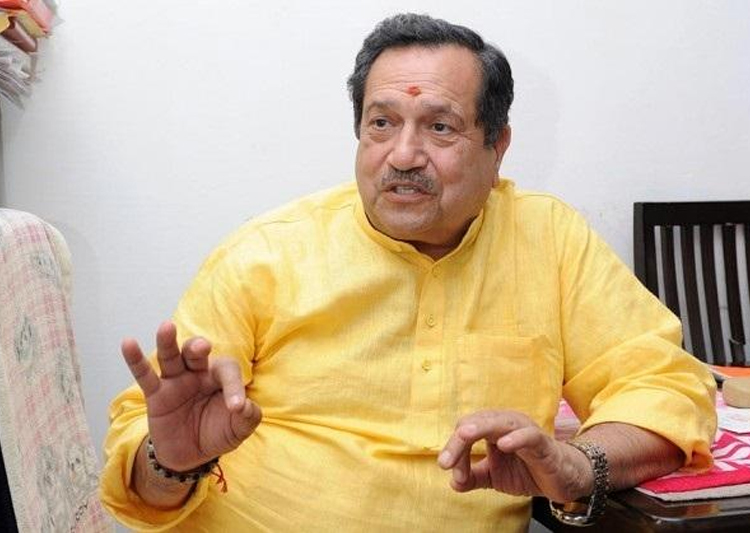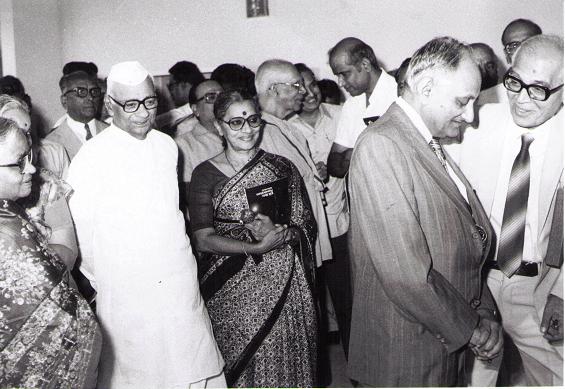Vaman Rao’s Memoirs: Part-IV

(……..Contd) My eldest brother Kishan Rao was married in 1934 when he was 19 and doing MA (English Literature) in Aligarh University on scholarship of Rs.50/- given by the State. He could not join any other University as Osmania University was recognized only by Aligarh. He had stood first in English B.A. in the University. I was six years old and therefore from the beginning he showed interest in my studies which explains he got me admitted in school. He was fond of me, till he passed away and was happy at my progress which was due to sheer good luck, which he did not have so much, though he was a thousand times abler than me in every way. My sister-in-law Shanta Bai who was 13 when she married took a motherly interest in me throughout and when I stayed with them while I was in college and in life, as a joint family along with my mother from 1948 till 1971 in Agapura whence I moved to Banjara Hills where I built a house in the journalists colony, along with other journalists. Thanks to the then Chief Minister K Brahmananda Reddy, land was allotted at a concessional price.
My SSLC examination was held in the City College adjacent to the imposing High Court building, with a nearby Hanuman temple. My elder brother, Lakshman Rao who was studying law then used to bring tiffin prepared by my eldest sister-in-law to be taken by me in the interval. For, we had to answer two papers every day, morning and afternoon. As I was new, another examinee in our precincts, Jayashankar and I used to go in cycle rickshaw to the examination centre. My eldest brother who was employed in the Secretariat would eagerly wait for my return to find out how I did the paper. He had high hopes in me. I wonder whether I met his expectations. After examination I went back to be with my father. I expected a first class but got only a high second class 58.5% but stood second in English in the State, which I came to know later. But, when the result was announced I was crest fallen. After initial feeling of a setback, I drew courage and prepared to apply for seat in Intermediate in the prestigious Nizam College (then affiliated to the Madras University). Students more or less drawn mostly from aristocracy and those highly placed got seats easily, though well-merited students of middle and lower classes got admission. I was doubtful as I failed to pass in I class. Therefore an English teacher Azam stated to be a relative of the principal Quader Husain gave me a letter commending my admission.
My brother encouraged me though the fees even according to standards at that time, was high which he had to stint to pay. My father, a pensioner, who had to run a family of six (three of us had come to Hyderabad) could not afford to help me. The college was at a walking distance from my house and could be reached without much strain. Though buses were available I could afford charges that was only to avoid going late for the classes. We had no dress restriction, but we dressed as well as our poverty afforded. It was a co-educational college, with girls well-dressed. Nizam College had a hoary history with its alumni occupying high positions in Government and in other fields. Its first Principal was Dr Aghorenath Chattopadhyaya, father of famous Sarojini Naidu, poetess, politician and Gandhiji’s favourite companion.
For one like me coming from Warangal, Hyderabad itself was overawing and everything in Nizam College appeared to be novel. The teachers wore black academic gowns when they came to take classes and took position on a raised platform. The Salar Jung Hall appeared to me mighty with the portraits of previous principals, mostly British, looking down on us, with that of Dr. Aghorenath Chattopadhyaya in the Centre with his flowing beard. Our English classes were held in this hall. We had heard of the grand traditions of Nizam College, of the brilliance of its alumnus and the scholarship of its teachers. We were told of the Shakespearean scholar, T. Veerabhadrudu, who had left by the time we came to Nizam College in 1943. But there was the dapper-looking and turbaned Prof. S. Hanumantha Rao whose eloquent lectures were heard with rapt attention. English was taught by Prof. K.S. Raghavan, a stylist, who made an impression on new comers with his sophisticated accents.
To us, who studied in mofusil schools, the image of Nizam College from a distance was one of a close preserve of the aristocracy and the elite. It was believed that its portals were not freely open to the proletariat. So, very few of us hoped to join Nizam College. I was doubtful whether, without the advantage of birth, wealth or position, I would get admission in Junior Inter. But, I did get a seat, whatever may be the reason. Later, I was glad to find quite a few students hailing from the middle classes as my classmates.
The Principal evoked respect and kept us in awe. But, the head peon at his door, Mahboob Ali, a well-built tall person was a power and regulated interviews with the Principal. But he was helpful to juniors who were on his right side. We had a five-day week, Friday and Sunday being holidays. Friday as it was Government Holiday and Sunday because it was holiday for Madras University to which it was affiliated. I had four Principals in 4 years of my stay in the college, Quader Husain (Sri Zahid Husain only for a while), S. Ali Akbar, Haroon Khan Sherwani and P.K. Ghosh. While Quader Husain appeared remote to us, Prof. Ali Akbar gave a feeling of oneness with students who loved him. It was a rare coincidence that during my five years in Government later on in my career, I had four Chief Ministers, Sri K. Brahmananda Reddi, Sri P.V. Narasimha Rao, Sri H.C. Sarin (Advisor under President’s rule) and Sri J. Vengal Rao.
College day and Sports day appeared great to us new entrants. In the college debates we were overawed by the eloquence of our Burkes, Abdul Hadi, Haleem and Devendar Rao, to mention a few. Then there were the legendary cricketer Ghulam Ahmed, college captain and the amiable ladies captain Ms. Kanga. Students were exposed to the lectures of celebrities in and outside the college. I can recall Sri Harindranath Chattopadhyaya singing his favourite song ‘Dahi, Zera Chak Ke Dekho’ in a vibrant voice, Sarojini Naidu’s majestic oratory, Ghulam Mohammed, the financial wizard (who later became Governor-General of Pakistan), C.V. Raman’s scintillating exposition on Diamonds and Dr. S. Radhakrishnan’s grand Niagra-like eloquence.
The diamond jubilee of Nizam College was celebrated with éclat. So were the centenary celebrations much later when a souvenir was brought out, rich in articles, to which I contributed and had a share in guiding the publication. Kamala, a Lecturer in charge of it was my friend K. Lakshmana Shastry’s daughter. Smt. Sarojini Naidu whose father Dr. Aghorenath was its first Principal, graced the occasion and sat beside H.E.H. the Nizam. I was one of those asked to be in attendance at the Exhibition. Expecting the Nizam to visit our stall, as the practice then was, I wore a dastar (head-gear) and Baglus (belt) on a suit (all borrowed). I wish I had my photo taken then to be preserved till now! (To be concluded)




